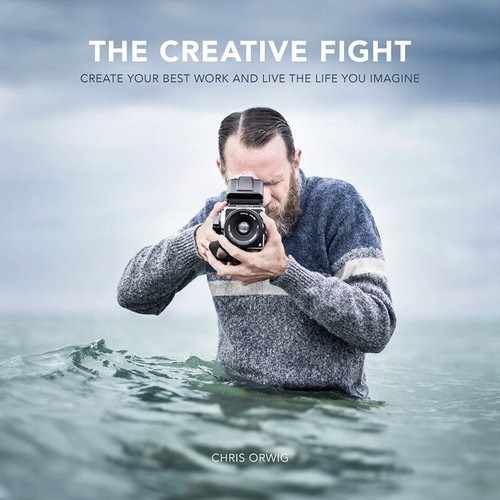Chapter Thirty-Four. Nothing to Lose

It wasn’t a surprise when Martin received a C in his first speech class in graduate school. Martin’s intellect, depth, and passion burned bright, but he stuttered and his speech impediment was tripping him up. Then one day, as if by miracle, his speech impediment disappeared. Martin’s friend Harry once asked him about how he was able to leave his stutter behind. Martin explained, “Once I accepted death, I stopped being bedeviled by these things.” Accepting and facing the fact of limited time has a clarifying and cleansing effect. No longer afflicted with a stutter, Dr. Martin Luther King, Jr. went on to become one of the most famous orators of all time. And accepting death didn’t just improve the way he spoke, but gave him courage to live the life to which he was called and contribute to a higher cause.
Life Distilled
Finding one’s true destiny always involves a deeper awareness of death. Otherwise, the fear of death holds us back from having the courage to accomplish our dreams. Steve Jobs put it this way: “Remembering that I’ll be dead soon is the most important tool I’ve ever encountered to help me make the big choices in life. Almost everything—all external expectations, all pride, all fear of embarrassment or failure—these things just fall away in the face of death, leaving only what is truly important. Remembering that you are going to die is the best way I know to avoid the trap of thinking you have something to lose. You are already naked. There is no reason not to follow your heart.” Death distills life into its simplest form. Death can build courage, but it can also take it away.
In the face of death, the grief of loss can overwhelm. When my friend Todd lost his dad he said, “The sun will never shine the same.” Death does distill, but it can also diminish and overwhelm. When Candy Chang was processing her grief over the death of a close friend, she began asking questions like, “How do I now find joy in the everyday?” and “How can we live the life we have to its fullest degree?” In the face of darkness, questions like these help us begin to see the light. Chang decided to pursue these questions further by creating a small art project to help her process the pain.
WALK AROUND FEELING LIKE A LEAF. KNOW YOU COULD TUMBLE AT ANY SECOND. THEN DECIDE WHAT TO DO WITH YOUR TIME.
— NAOMI SHIHAB NYE
Before I Die
Chang took to the streets and painted the side of an abandoned house in her New Orleans neighborhood with chalkboard paint and then stenciled the sentence “Before I die I want to _____________.” She left plenty of chalk so that others could fill in the blanks. Within a day the wall was covered with chalk dreams as neighbors stopped and reflected on their lives. This first project ignited others. Currently, over 600 “Before I Die” walls have been created in over 70 countries. Chang has since given a TED talk about the walls, and photographs of many of the walls have been made into a book.
What’s interesting to me about the walls is how collaborative and contagious the project is. Reading someone else’s response makes you want to write your own. And the responses are profound. Had the wall just said, “I want to _____________,” the responses would have been shallow and smug. But by adding the reference to death, the tone takes on a more creative and beautiful form, removing the risk of self-consciousness about what you are going to write. Death is the great equalizer and helps us stop worrying about ourselves. Death reminds us that in the grand scheme of things, all of us, great and small, will meet the same fate.
Chang’s “Before I die....” question reminds us that death can help us dream. The composer Leonard Bernstein once said, “To achieve great things, two things are needed: a plan, and not quite enough time.” Chang’s question helps us with both. It reminds us of both the brevity of life and that we have to get to work chasing our dreams. The sun sets soon, and none of us have enough time. You don’t have enough time. And your time is running out.
Like all of us, you probably feel busy and overwhelmed, but this slice of time is all that you have. You will never have more time than you do right now. The time to live is now. We tend to forget these truths, thinking that we can defer life until another day. Cyril Parkinson explained, “Work swells to the amount of time we give it.” In other words, give a project a week and it will take that long. We give life too much time. Thinking that we have forever, we delay doing what matters most. Squaring off with death reminds us that we do not live by a perpetual clock. And considering your death in the future heightens how you live in the now.
Life from Death
Awareness of death can give you the gift of presence and ignite a deeper desire for life. One way to gain these gifts is to practice death before it sweeps us away. It sounds strange, but such a practice can help us thrive. As one of my Jewish friends explained, that’s exactly why some Jewish communities celebrate the holiday of Yom Kippur. The most common prayer of that day is called the Unetaneh Tokef. Rabbi David Wolpe explains, “This prayer reminds us that our lives are like the wind that blows and the flower that fades.” Other traditions include wearing white to connote purity and to represent the shrouds in which we will be buried. Rabbi Wolpe sums it up: “In Yom Kippur we emulate corpses: not eating, not drinking, freed of the body. This will one day be our fate.” Such a celebration really makes sense—facing your own death so that you can live. This idea shows up as a theme in other world religions, in literature, and in one of my favorite films, Dead Poets Society.
In one scene, the protagonist, English teacher John Keating, leads his students into the hall. He asks his pupils to look at the photographs of past students who have died. Keating asks his students to stare into their eyes. He raises the point that these students are just like them. They too believed they were destined for great things. Their eyes shone with hope. Keating’s students stare in silence. Then he makes his point: “If you listen real close, you can hear them whisper their legacy to you. Go on, lean in. Listen. Do you hear it? (whispering in a gruff voice) Carpe. Hear it? (whispering) Carpe. Carpe diem. Seize the day, boys. Make your lives extraordinary.”
The entire film hinges upon those two words, carpe diem. This is not an antiquated and innocuous phrase but a call to fight. Seizing the day isn’t a passive phrase. And life is too short to let it slip away. Such inspiration rings true no matter who we are or what our age. We have all been designed to be and to do certain things, but fear holds us back. Let the idea of death help you to overcome. Let it be a fuse that ignites your creative soul. This life is your one wild chance—don’t let it drift away. Stop living a half-lived life. Your time is running out. You will die. Make the most of what you have. Live life to the fullest degree by letting death distill what is most important to you.
DEATH IS OUR FRIEND PRECISELY BECAUSE IT BRINGS US INTO ABSOLUTE AND PASSIONATE PRESENCE WITH ALL THAT IS HERE, THAT IS NATURAL, THAT IS LOVE.
— RAINER MARIA RILKE
STEP 1
Follow your gut and fill in the blanks below:
Before I die I will ___________________________________________________________________________
Before I die I will ___________________________________________________________________________
Before I die I will ___________________________________________________________________________
Before I die I will ___________________________________________________________________________
Before I die I will ___________________________________________________________________________
Select one of your entries above and map out a few practical steps that you can take to achieve that dream/goal/idea:
1.____________________________________________________________________________
2.____________________________________________________________________________
3.____________________________________________________________________________
STEP 2
Locate a vintage photograph of a family member or friend who has passed away. Tack it up next to your desk, or carry it around in your journal. Then stare into their eyes and listen for their voice. Follow Keating’s lead: “If you listen real close, you can hear them whisper their legacy to you. Go on, lean in. Listen.” What is their message for you? Write it down and live on its hint.
STEP 3
I believe in the idea of carpe diem so much that I’ve created a website, carpediemsupplyco.com, as a resource for those who want to live a more creative and inspired life. Visit the site and you can find helpful videos, audio courses, and more.


